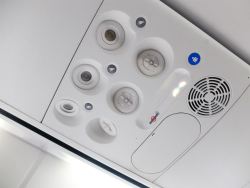Advances in aircraft cooling units
Using cyanate ester resin in fabric reinforcement for plenums (a part used in an air cooling unit) has multiple advantages. Some of these include high thermal stability, toughness, low moisture uptake and radiation resistance. However, the manufacturing of these plenum parts is not reliable. Some of the main problems include diversities, porosity and pink coloration. The PLENOPTIMUM (Manufacturing optimization of a plenum with GFRP cyanate ester-based prepreg) initiative improved the method of plenum manufacturing to reduce defective parts. Researchers identified the major factors that influence deformities during plenum manufacture. They determined that the main reason for the pink coloration and porosity of the air channels is oxidation. Scientists also determined that a leak-free vacuum system and reduced resin flow can reduce the frequency of defective parts. They determined that reducing the process cost and time as well as the number of defective parts can provide an estimated 25 % cost saving. Ultimately, the reduction of faulty parts will lead to less material and energy wastage, leading to a more sustainable industry.







